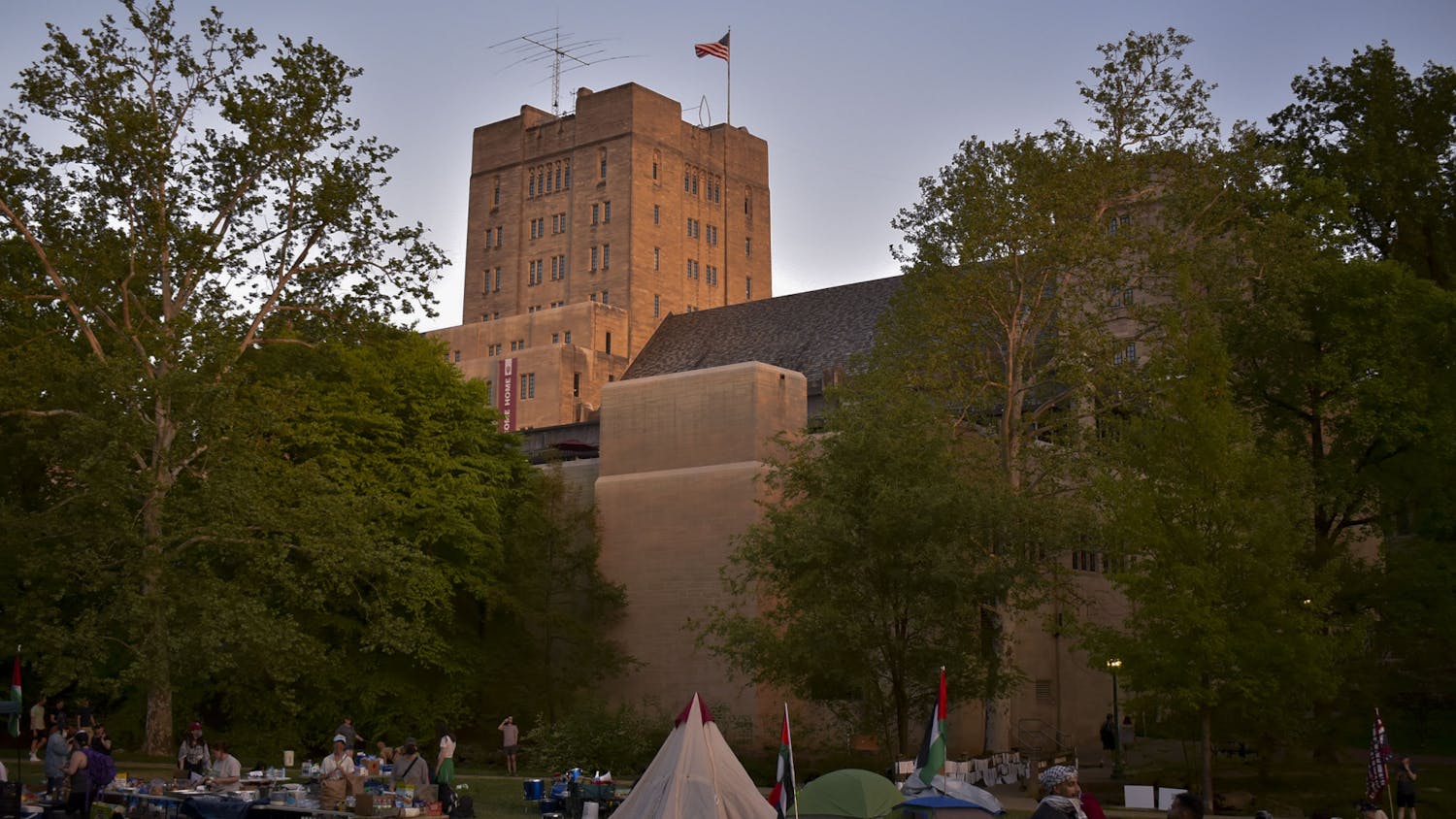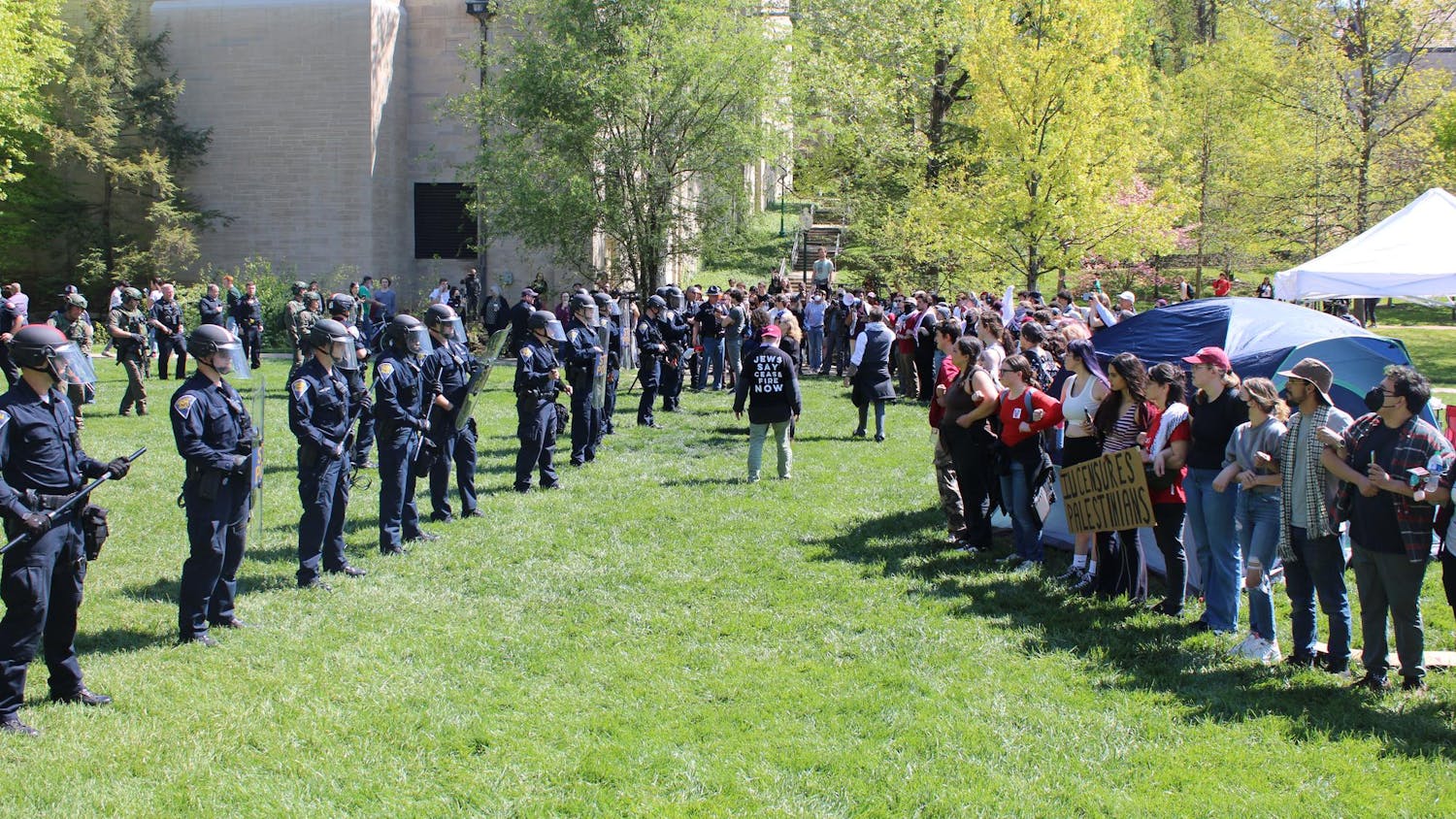The group suspected a project of such magnitude, an interstate route stretching across the southern half of Indiana, would cause severe environmental damage.
“We really had the project almost at a standstill until Mitch Daniels came into office,” said Thomas Tokarski, now the president of Citizens for Appropriate Rural Roads. “We still have huge amounts of support from the people in Indiana.”
Since that farmhouse meeting, Tokarski said his organization has gathered close to 150,000 signatures on a petition to close the portion of the interstate in Monroe County.
Nevertheless, construction recently began on section five of the interstate which follows State Road 37 from Martinsville to Bloomington.
“Sometimes you get something in your life that is really important and you just have to go with it, even if you know you’re not going to win,” Tokarski said.
Tokarski and his wife alone have sent over 40 complaints to the various government organizations responsible for monitoring the construction project.
“The continuing dumping of large amounts of sediment into surface streams is likely to have a major impact on aquatic life,” he wrote in a letter from September 2013. “Is anyone looking at the impacts of this massive amount of sediment into these ‘Waters of the US,’ and into the karst system in this area?”
Tokarski’s complaints were accompanied with photographs of canning jars filled with brownish-orange water and mud-covered creek beds.
Now, at the beginning of the newest section of I-69, his concerns are far from assuaged.
“This has been going on for years and the waters around here continue to be seriously polluted,” he said. “The karst terrain in this area is sensitive. There’s a lot of sinkholes and caves and things that the polluted water sinks into.”
Tokarski accused the Indiana Department of Environmental Management of not fulfilling its monitoring duties.
“You show them the pictures, the water samples and all they say is that all the control measures are in place, therefore there’s no violation,” Tokarski said. “They just repeat that even though you’re showing them that the system is broken.”
When Randy Braun, the IDEM inspection chief for the wetlands and stormwater section, described the system, he explained it centers more on inspecting the control measures at the construction areas rather than the effectiveness of those measures in the surrounding environment.
“It’s really more of a performance-based permit,” Braun said. “So what will happen is we will conduct periodic compliance inspections. We’re not necessarily going to monitor those receiving waters as much as we’re going to look at the performance of those practices onsite.”
Braun explained each site is issued a runoff permit that requires the person in charge of the project to plan measures to minimize the amount of sediment discharged from the area. Though those plans are largely enforced through self-monitoring practices, Braun noted they work with IDEM staff to develop the plan and an IDEM representative is often present at the site.
“There are precautions, but there’s always a possibility that there could be a bypass or something like that,” Braun said, referencing instances when sediment gets around protective barriers.
Barry Sneed, IDEM’s public information officer, said when runoff does get into streams, a vacuum truck is used to suck the sediment out.
“If it hasn’t been caught from a preventative measure, it’s been caught from a remediation measure after the fact when we inspect it,” Sneed said.
Braun said all complaints are recorded, responded to within two weeks and addressed appropriately. Due to the complaints submitted during construction of the last interstate segment, he promised that IDEM is taking extra time when planning section five.
Tokarski now recognizes he can’t stop I-69 from being built.
Even so, he vowed to continue fighting for a more environmentally friendly building process.
“Trying to take away highways in Indiana is like trying to take away guns or apple pie,” he said. “It’s God’s highway. When God comes back for the second coming, He’s coming in on I-69.”





